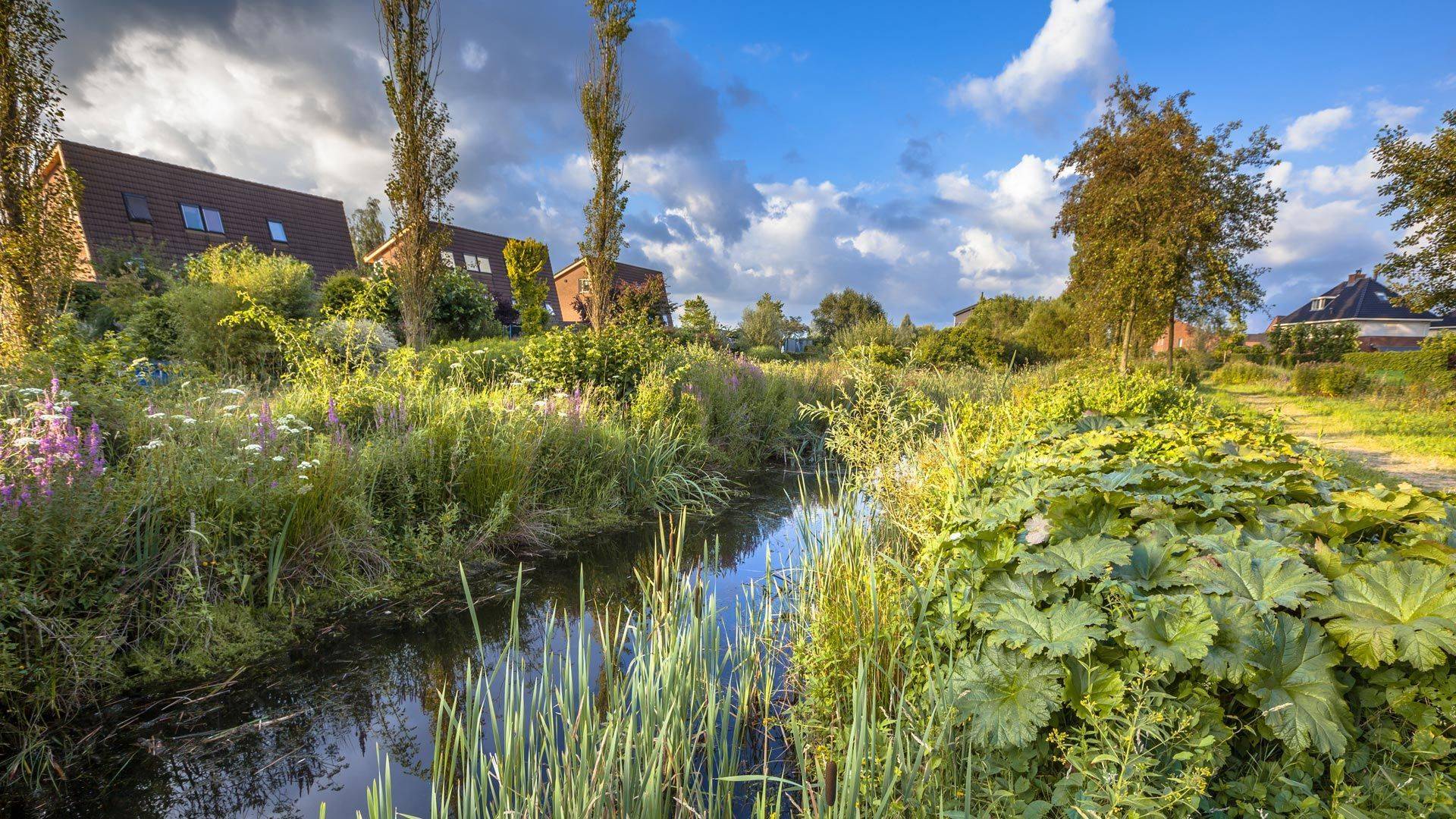
Using sustainable drainage to decarbonise developments
As the UK looks to decarbonise the housing stock and wean the nation off gas, local energy networks will be key to meeting emissions targets. Thanks to advances in heat pump technology, developers and local authorities should tap into water as a source of renewable energy, says AECOM water resources expert Martin Williamson.
In February 2019 the government’s statutory advisor, the Committee on Climate Change (CCC), warned that “UK homes are not fit for the future,” and announced that gas was not to be used in new homes from 2025 . This target presents planners and developers with a significant challenge: currently 85 per cent of British homes use gas for heating and 50 per cent for cooking and a progress report by the CCC pinpointed the continued use of gas boilers as one of the most intractable problems for reducing emissions.
If handled correctly, water could be part of the solution. Developers, planners and local authorities looking to generate alternative heat sources to gas to feed into electricity-based local energy networks could lower the carbon footprints of pipeline schemes.
Effective water management through sustainable drainage systems (SuDS) aligns modern drainage systems with natural water processes through the use of features such as swales, storage ponds and lakes. Widely used to mitigate flood risk while enhancing the local environment, its potential as a source of energy has yet to be realised.
Summarising a paper due to be presented at the Flood & Coast 2021 conference, this article explains how extracting energy from heat pumps embedded in SuDS could help power the UK’s homes in the future, reducing reliance on gas.
Widely used to mitigate flood risk while enhancing the local environment, the potential of SuDS as a source of energy has yet to be realised.
The next stage for an existing technology
Ground source heat pumps (GSHPs) operate by removing latent heat from the ground or water and converting it into useable energy to warm homes. To date, GSHPs have been typically installed by private homeowners and used in conjunction with solar panels to reduce reliance on the national grid. Up-front installation costs are typically much higher than systems powered by gas so domestic take-up has been limited to date, even though energy bills are much less over time. As the 2025 deadline approaches however, we expect that those costs will reduce significantly.
Developers are already obligated to provide SuDS on new housing schemes. Early in the masterplanning process, if new schemes were to combine SuDs with GSHP capabilities then SuDs could be used for energy generation as well as water management. Rainwater collected in lakes and swales would be warmed by the sun, becoming a natural energy storage cell, before flowing into underground heat extraction chambers. In addition, living near water provides health and wellbeing benefits.
Heat sourced from SuDS could be part of a wider energy strategy for new developments, to be used in combination with other alternative sources such as traditional GSHP, solar panels and greywater heat recovery. Greywater heat recovery technology from baths, sinks and showers is widely available, but it is expensive. However, if heat exchanges used to convert energy gathered from the GSHPs in SuDS were installed as standard, then greywater could be used to further supplement supply.
While use on new-build developments has not yet been trialled, we are beginning to see use of GSHPs on a larger scale. For example, as part of its Renewable Investment Energy Programme, the National Trust is installing GSHPs at The Vyne, a large country home in Hampshire. Once the array of coils is installed in the existing lake, the generated energy will be used to heat the house and café. The Trust will also receive Renewable Heat Incentive (RHI) – a government scheme that offers financial incentives to householders, communities and businesses to encourage the uptake of renewable heat technologies.
Improvements to quality of life
Once water is perceived as an asset on a site, larger water features can be incorporated into masterplans and scheme layouts. Lakes, fountains and wetlands can substantially enhance a development’s aesthetic appeal in addition to the wellbeing of the local community.
From an energy generation perspective, these above-ground features will maximise the warming potential of the sun. In addition, water features used in combination with other green infrastructure can contribute to major ecological gains, as well as air and water quality improvements. Furthermore, water features can help cool inner-city areas addressing urban heat island effects.
Managing flood risk and heat extraction
Managing water levels in rivers will be increasingly important as extreme weather events become more common. SuDs already mitigate against flood risk, but their function could be further enhanced for water management and energy generation.
Using technology such as telemetry, already employed by the Environment Agency (EA) in managing the flow of water through large catchment areas, ‘Smart SuDS’ could become part of a wider water management network. Diverting rainfall to local water storage systems – which is then held back until the optimum amount of heat is extracted and the flood peak has past – will help to reduce the risk of flooding downstream. Water can then be released back into the rivers in a controlled manner at a suitable time.
Water as an asset – not a problem
Areas of economic potential such as the Oxford-Cambridge Arc offer an opportunity to integrate water into a wider energy strategy. Putting water at the heart of masterplan design in this way will contribute to a low carbon future. Planners, developers, and lead local flood authorities should explore the possibilities.
Water is an asset, not a problem. Flood risk specialists need a complete change of mindset to see it this way, as part of the emissions reduction solution.